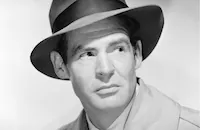Lolly Madonna XXX

Brief Synopsis
Cast & Crew
Richard C. Sarafian
Rod Steiger
Jeff Bridges
Scott Wilson
Gary Busey
Season Hubley
Film Details
Technical Specs
Synopsis
Laban Feather brews Tennessee moonshine with his sons Thrush, Zack, Hawk, and Finch. The chief rivals of the Feather Family in producing and selling illegal corn liquor are the Gutshalls, father Pap, and sons Ludie, Seb, and Villum. In addition to fighting over the white lightning market, the two families have also been feuding over some land that each believes is their property. As a prank, Ludie mails a postcard from a fictitious woman named Lolly-Madonna to the Feather household, in order to get the brothers squabbling over which son has attracted the mysterious admirer. But the joke has unexpected consequences when Thrush and Hawk kidnap a woman who was passing through town to meet her fiancée, assuming that she is Lolly Madonna.
Director
Richard C. Sarafian
Cast

Rod Steiger

Jeff Bridges

Scott Wilson
Gary Busey
Season Hubley

Robert Ryan
Randy Quaid
Paul Koslo
Timothy Scott
Kiel Martin
Teresa Hughes
Ed Lauter
Katherine Squire
Joan Goodfellow
Crew
Herman A Blumenthal
Rodney Carr-smith
Rodney Carr-smith
Sue Grafton
Sue Grafton
Philip Lathrop
Mike Moder
Fred Myrow
James W. Payne
Tom Rolf
Hal Watkins
Charles Wilborn
Film Details
Technical Specs
Articles
Lolly-Madonna XXX
Richard Sarafian's Lolly-Madonna XXX (1973) is a paradigmatic example, and one not commonly seen (or released on video). Here is a slice of backwoods Tennessee (filmed in the Appalachians), which, although a pre-credit montage of photographs plainly tells us the timeframe is the '70s, looks as though it hasn't changed a wit since the Hoover administration. Isolation away from things like who's President or what's happening in the world is part of the weedy terrain, which at first looks conscientiously un-art-directed. Adapted from Sue Grafton's book (her second, and the last before her abecedarian mystery run began with A Is for Alibi), the film never detours away from a single plot of land-a chunk of unfarmed, overgrown acreage amidst a web of dirt roads under dispute between two warring tribes, the Feathers and the Gutshalls. The cast & character itinerary is one of the film's most seductive points, with a murderers' row of actors eating the scenery and/or trying out their chops as youngsters. On the Feathers side, you get brooding psycho-dad Rod Steiger, take-no-guff ma Catherine Squire, and five sons: sociopath Scott Wilson, goofy criminal Ed Lauter, dimwit Randy Quaid, reasonably civilized Timothy Scott, and upstart Jeff Bridges, whose dead young wife is also an unhealed family wound.
The Gutshall line-up has timid pa Robert Ryan, weather-it all ma Teresa Hughes, and offspring Gary Busey (dumb but not insane), Paul Koslo (permanently nine years old), Kiel Martin (a hair-trigger troublemaker), and Joan Goodfellow (a virginal wild child and the clans' only daughter). Life with these slopeheads is all collapsing porches, pointless family spats, unwashed hair, and distrustful gripes. The trouble over whose land is whose has boiled down to one set of feral boys pranking another, until one prank-a postcard about a fictional visiting bride-to-be, named Lolly Madonna-inspires the Feathers to abduct a girl from the local bus stop.
The girl, played by Season Hubley in a sporty bob, was just passing through, but they don't believer her, and the situation goes from cold war to hot once the Gutshalls decide they should rescue her. An impromptu rape of Goodfellow's clueless tomboy by the worst of the Feathers (not Bridges' wholesome scion, with whom Hubley's aimless hippie girl forms a bond) simply kicks the tension into overdrive, and an all-out shooting war erupts between the families.
The movie does not suffer for lack of acting brio or regional texture--Sarafian, a busy TV director who suddenly became something of a generational voice with Vanishing Point and Man in the Wilderness, both 1971, exploits the dead-real poverty-haunted locations for all their worth, in a way that feels distinctly early-'70s. (This was when filmmakers from Dennis Hopper on 1969's Easy Rider and Boorman on Deliverance would just go to a hayseed backwater and use what and whomever they found there.) It's a deliberately old school, almost classical-mythic story structurally, ending as it does with a tragic two-way massacre that would've felt familiar to Aeschylus and Shakespeare. As the reviewer in Variety pointed out in 1973, you don't have to look far to see Lolly-Madonna XXX as a parable for what was happening then in global politics-meaning, we can presume, the cross-border warmaking in Southeast Asia. That's a pretty simplistic reading of the Vietnam War, if not of Sarafian's film, and anyway, the real glory of the film is its thorough American-ness, in its very-'70s devotion to specific provincial life.
Of course, the traditional postwar character-actor fireworks (Steiger, sweating) is its own spectacle; Hollywood acting always had a difficult time convincingly portraying very stupid people, but that never kept anyone from trying. The end product is earnestly doomladen, and inescapably an artifact of its era, a time when movies were freshly subject to a grungy grain-alcohol cocktail of social protest, youth culture empowerment, international cinephilia, low-culture realism, and prole restlessness. Which is to say, Lolly-Madonna XXX, as with so many films of the Nixon-'Nam days, could never be made today, and would also be an unlikely candidate for streaming today. Yes, American movies were once like this, all the time - fascinated with reality, hopped up on flyover-state cultures, and unafraid of unhappy endings.
By Michael Atkinson

Lolly-Madonna XXX
Quotes
Trivia
Miscellaneous Notes
Released in United States 1973
Screenwriter Sue Grafton is the author of the bestselling alphabet-tagged series featuring hard-boiled female detective Kinsey Millhone. The twelfth installment, "'L' is for Lawless," was published in the United States in 1995.
Released in United States 1973














